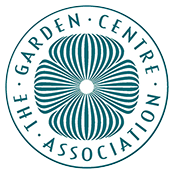Here at Webbs, we love our new working bee hives so much we thought that we’d tell you a little bit more about them. We have two different types of hives on site. The Langstroth Hive, in our New Wave Gardens, is made from polystyrene and tends to be used by professional beekeepers, it’s the worlds most popular hive as it allows beekeepers to open the bees nest without damaging it. The ‘show hive’ in our Riverside Gardens, is called a WBC Hive and has the more commonly known bee hive shape.
Chris Broad, our local bee expert will be working with our Head Groundsman Mike Rutter to look after all of our bees.
Both types of hive will have extra layers added to them during the summer months when the bee population grows dramatically. In the autumn the bees are returned to a single layer for the winter months. The layers that are removed are taken away and the honey extracted and put in jars for sale. Just to make sure we haven’t left the bees short of food for winter we feed them a sugar syrup in September.
The bees in our hives are called ‘Buckfast Bees’ and they are known for being gentle, productive and less likely to swarm which makes them perfect for our needs. They will feed on the abundance of nectar and pollen in our gardens over the summer and transform the nectar into honey by a process of regurgitation and evaporation. They store it as a primary food source in wax honeycombs inside the hives. The honey season is quite short, mid-April to mid-July being the only reliable months with ample nectar available. During these months the bees will collect nectar from a variety of plants such as blackberry, clover and lime. In a normal year Chris can take an average of at least 40kg of honey per hive, which means we’re hoping to produce around 800 jars of honey!



